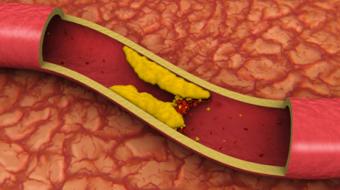Featured Videos
Premier Practitioners
All Videos
A cardiac stent is a small, expandable metal or plastic tube that is inserted into a narrowed artery to keep it open. It can also be called a heart stent or coronary stent. To open larger arteries, your surgeon may use a stent graft made of fabric. Usually blood vessel blockages are caused by a buildup of plaque. You may need an emergency stent if your coronary artery is blocked and/or you suffer a heart attack. The surgeon will place a catheter into the blocked coronary artery, followed by a balloon angioplasty and a stent in the artery.
What to Expect During the Stent Procedure
A stent procedure is much less invasive than coronary artery bypass surgery. Generally, recovery after a stent surgery results in less discomfort and a shorter recovery time. Your doctor will usually recommend blood-thinning drugs such as aspirin to prevent blood clots. Before getting a stent, your doctor will tell you not to take any drugs that will make it harder for your blood to clot. There are certain individuals who have nickel allergies in which certain types of stents should be avoided, and that should be made known to the cardiologist before the interventional procedure.
During the cardiac stent procedure, the surgeon will make a small incision - usually in the groin or arm - and use a catheter to guide surgical tools through your blood vessels. He or she may use an angiogram to help guide the stent to the broken or blocked blood vessel. Once the stent is placed, the surgeon will close the incision. Most patients remain in the hospital overnight after a heart stent surgery.
What to Expect After the Stent Procedure
Many patients are able to return to work after a week, however, often those who have undergone emergency stent surgery take longer to recover. Your physician will recommend no heavy lifting or strenuous activity for a few weeks after surgery.
Stents are highly effective for what they're designed to do, which is to relieve obstruction from cholesterol blockages to improve symptoms, and in the cases of heart attacks, open up plugged vessels to relieve damage to heart muscle from lack of blood flow.
Talk to your cardiologist if you'd like more information on stents.
Visit HealthChoicesFirst.com for more videos and resources on heart health.
Print this Action Plan and check off items that you want to discuss with your healthcare provider
-
A cardiac stent is a small, expandable metal or plastic tube that is inserted into a narrowed artery to keep it open. It can also be called a heart stent or coronary stent.
-
Before getting a stent, your doctor will tell you not to take any drugs that will make it harder for your blood to clot.
-
During the cardiac stent procedure, the surgeon will make a small incision - usually in the groin or arm - and use a catheter to guide surgical tools through your blood vessels.
-
Most patients remain in the hospital overnight after a heart stent surgery.
-
Many patients are able to return to work after a week, however, often those who have undergone emergency stent surgery take longer to recover.
Adherence:
Adhering to your medications, prescribed exercises or lifestyle changes (such as dietary changes, smoking cessation, reduced alcohol consumption, etc.) is essential to improving health outcomes successfully. Compliance to any prescribed treatment is the number one thing you can do to ensure positive changes and optimal treatment outcomes.
If a coronary artery is narrowed by a buildup of plaque, it can reduce blood flow to the heart muscle. A stent is a small wire mesh tube that is placed in an artery to help keep it open, lessening your risk of having a heart attack. To open a narrowed artery and implant a stent, a surgeon may perform an angioplasty or a percutaneous coronary intervention (PCI).
The physicians are in good standing with the College of Physicians and Surgeons of Canada, and are in good standing with the Canadian Cardiovascular Association and the Canadian Medical Association









